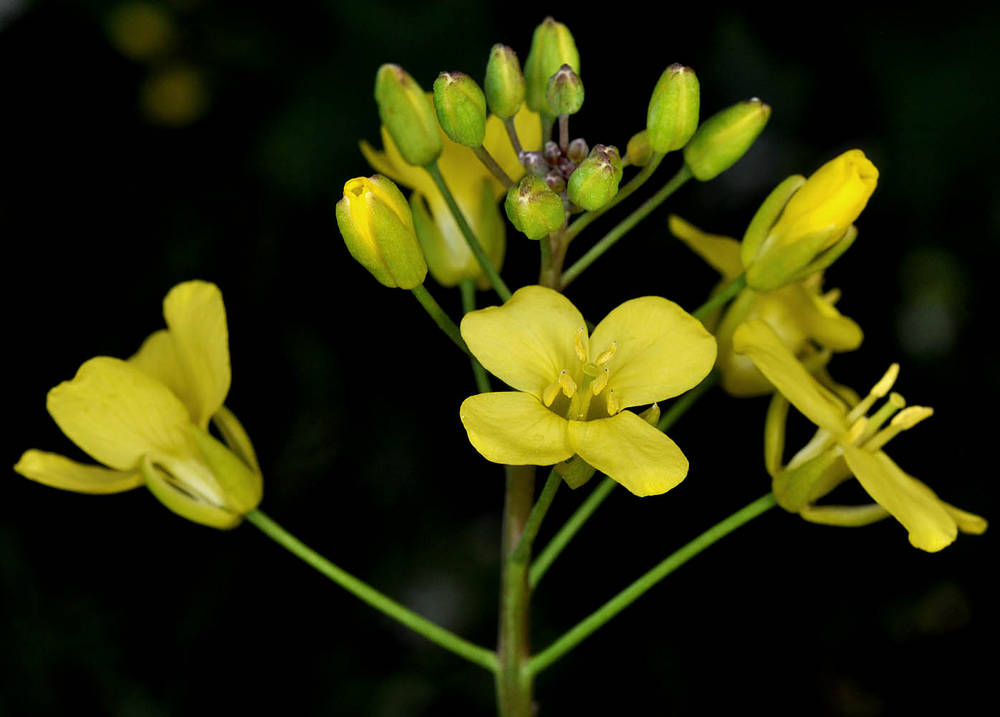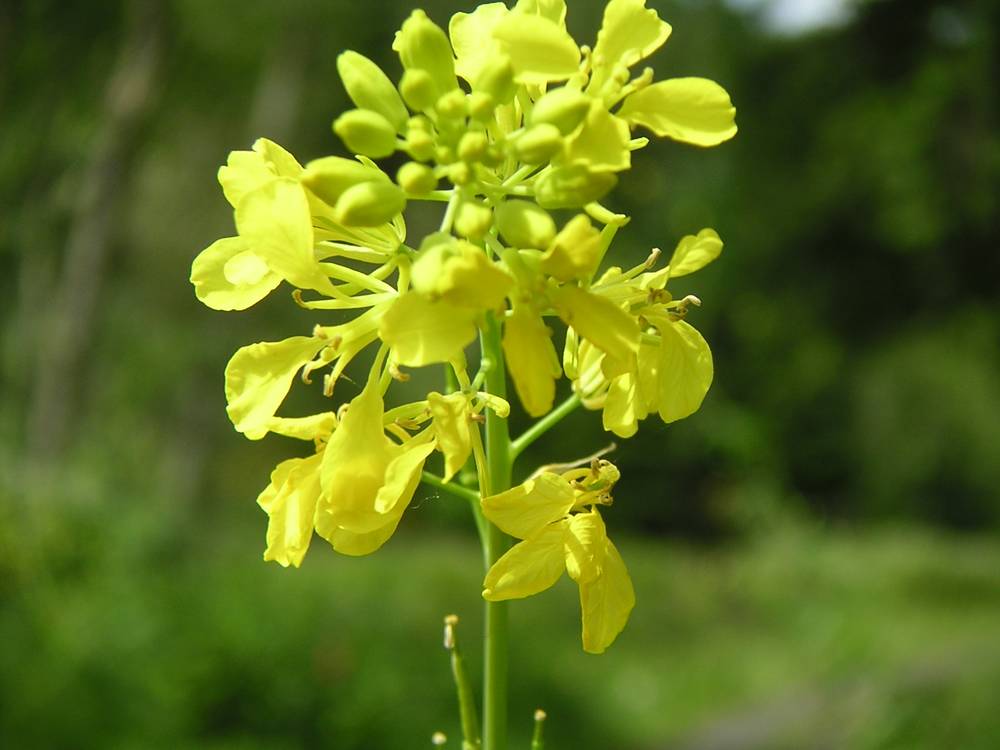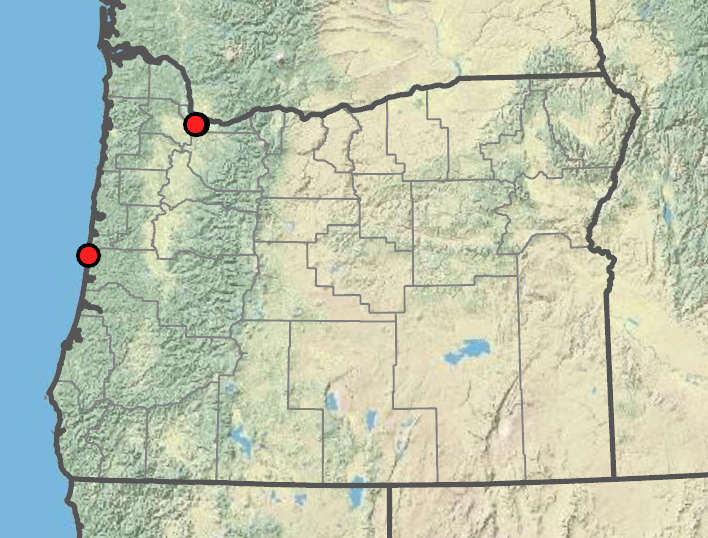Brassica oleracea
Brassica nigra
cabbage
black mustard
(3)6–15(3) dm.
3–20(31) dm.
and lowermost cauline to 40 × 15 cm;
margins entire, dentate, or pinnately lobed; terminal lobes larger than 1–13 lateral lobes on each side, petiolate.
and lowermost cauline 6–30 × 1–10 cm;
margins lyrate-pinnatifid to pinnatisect; terminal lobes larger than 1–3 lateral lobes on each side, petiolate.
fruiting pedicels ascending to divaricate; (8)14–25(40) mm.
fruiting pedicels straight; slender; erect to ascending, subappressed to rachis; (2)3–5(6) mm.
sepals oblong, 8–15 mm; erect;
petals ovate to elliptic; (15)18–25(30) × (6)8–12 mm, yellow or white;
claws 7–15 mm;
filaments 8–12 mm; erect at base;
styles obsolete.
sepals oblong, 4–6(7) mm, spreading to ascending;
petals ovate; (6)7.5–11(13) × (2.5)3–4.5(5.5) mm, yellow;
claws 3–6 mm;
filaments 3.5–5 mm;
lateral curved at base.
divaricate to ascending; terete; (2.5)4–8(10) cm × (2.5)3–4(5) mm, valvular segments (2)3–7.5(9) cm, 10–20-seeded per locule;
valves with prominent midveins; terminal segment conical; (3)4–10 mm; seedless or 1(2)-seeded.
4-angled, subappressed to rachis; (0.5)1–2.5(2.7) cm × (1.5)2–3(4) mm, valvular segments (0.4)0.8–2(2.5) cm, 2–5(8)-seeded per locule;
valves with prominent midveins, slightly torulose; terminal segments style-like; (1)2–5(6) mm; seedless, sessile.
1.5–2.5 mm in diameter.
globose, 1.2–2 mm in diameter.
oblanceolate; ovate; to oblong; to 10 × 4 cm, bases amplexicaul, auriculate, or not, sessile.
lanceolate to linear-oblong; to 5 × 1.5 cm, bases not auriculate, petiolate.
=18.
=16.
Brassica oleracea
Brassica nigra
Gardens, abandoned fields, waste places, coastal bluffs. Flowering May–Aug. 0–300 m. Est, WV. CA, WA; eastern North America; Africa, Asia, Australia, Europe. Exotic.
Brassica oleracea has been cultivated since ancient times, and many common vegetables have been cultivated from this species, including broccoli (var. italica), Brussels sprouts (var. gemmifera), cabbage (var. capitata), cauliflower (var. botrytis), collard greens (var. viridis), kale (var. sabellica), and kohlrabi (var. gongylodes).
Roadsides, disturbed areas, fields, orchards. Flowering Apr–Oct. 0–1000 m. Col, CR, Lava, Owy, Sisk, WV. CA, ID, NV, WA; worldwide. Exotic.
Ihsan Al-Shehbaz
Ihsan Al-Shehbaz
- Local floras:
BC,
CA,
OR,
WA
- Local Web sites:
CalFlora,
CalPhotos,
Flora NW,
PNW Herbaria
WildflowerSearch
iNaturalist (observations)
USDA Plants Database
- LBJ Wildflower Center
- SEINet
- Plants of the World Online
- Encyclopedia of Life
- Wikipedia
- Google Image Search
- Local floras:
BC,
CA,
OR,
WA
- Local Web sites:
CalFlora,
CalPhotos,
Flora NW,
PNW Herbaria,
Turner Photog.
WildflowerSearch
iNaturalist (observations)
USDA Plants Database
- LBJ Wildflower Center
- SEINet
- Plants of the World Online
- Encyclopedia of Life
- Wikipedia
- Google Image Search





